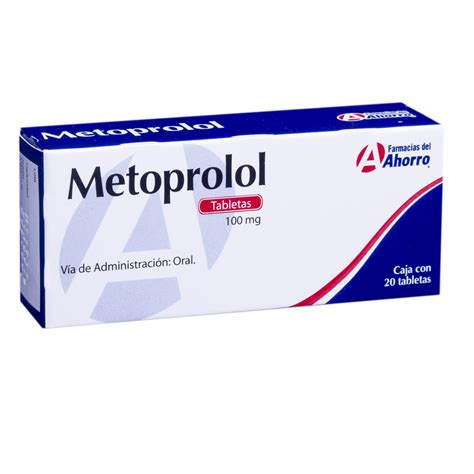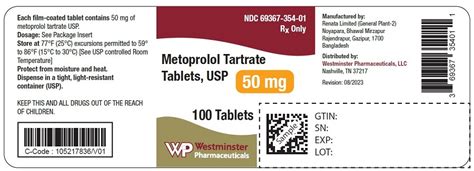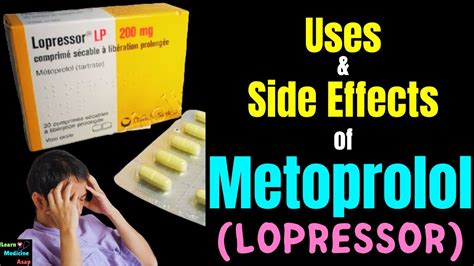Intro
Discover key facts about Metoprolol, a beta blocker medication, including its uses, side effects, and interactions, to better manage hypertension, angina, and heart failure, while minimizing risks and optimizing treatment outcomes.
Metoprolol is a widely used medication that belongs to the class of beta blockers, which are primarily used to treat high blood pressure, chest pain (angina), and certain heart-related conditions. The importance of understanding metoprolol and its effects cannot be overstated, especially for individuals who are prescribed this medication or are considering it as part of their treatment plan. In this article, we will delve into key aspects of metoprolol, exploring its uses, side effects, and how it works, providing readers with a comprehensive overview of this crucial medication.
The role of metoprolol in managing cardiovascular health is multifaceted. It not only helps in reducing blood pressure but also alleviates symptoms associated with angina and improves survival rates in patients who have experienced heart attacks. Given its widespread use and significant impact on cardiovascular health, it's essential to understand the mechanisms behind metoprolol's action, its benefits, and potential drawbacks. This knowledge empowers patients to make informed decisions about their health and to communicate effectively with their healthcare providers.
Understanding metoprolol is also vital for recognizing its potential interactions with other medications and its implications for overall health. For instance, while metoprolol is effective in treating certain heart conditions, it can also have side effects that may impact daily life, such as fatigue, dizziness, and shortness of breath. By exploring these aspects in depth, individuals can better navigate their treatment plans and work closely with their healthcare teams to optimize their care.
Introduction to Metoprolol

How Metoprolol Works
The mechanism of action of metoprolol involves blocking the effects of the hormone epinephrine, also known as adrenaline, and reducing the heart's workload. By slowing the heart rate and reducing the force of the heart's contractions, metoprolol decreases the amount of blood pumped by the heart, which lowers blood pressure. This action is particularly beneficial for patients with hypertension or those experiencing angina, as it reduces the strain on the heart and decreases the risk of heart attacks.Benefits of Metoprolol

Potential Side Effects
While metoprolol is generally well-tolerated, it can cause side effects, including: - Fatigue - Dizziness - Shortness of breath - Headache - Nausea It's essential for patients to discuss any side effects with their healthcare provider, as adjustments to the dosage or switching to a different medication may be necessary.Precautions and Interactions

Dosing and Administration
The dosing of metoprolol varies depending on the condition being treated and the form of the medication. Immediate-release tablets are typically taken two or three times a day, while extended-release tablets are taken once daily. It's crucial for patients to follow their prescribed dosing regimen and not to stop taking metoprolol without consulting their healthcare provider, as sudden cessation can lead to withdrawal symptoms.Metoprolol and Lifestyle Changes

Monitoring and Follow-Up
Regular monitoring and follow-up appointments with a healthcare provider are essential for patients taking metoprolol. This includes: - Regular blood pressure checks - Electrocardiograms (ECGs) to monitor heart function - Adjustments to medication as necessaryConclusion and Future Directions

Final Thoughts
Metoprolol, like all medications, is a tool in the broader strategy of managing health. By combining metoprolol with lifestyle changes and regular healthcare check-ups, individuals can significantly improve their cardiovascular health and reduce the risk of heart-related complications. It's also important for patients to be proactive in their care, asking questions, and seeking a second opinion when necessary to ensure they receive the best possible treatment for their specific condition.What is metoprolol used for?
+Metoprolol is used to treat high blood pressure, chest pain (angina), and certain heart-related conditions. It belongs to the class of beta blockers.
How does metoprolol work?
+Metoprolol works by blocking the effects of the hormone epinephrine, reducing heart rate and the force of heart contractions, which lowers blood pressure and decreases the heart's oxygen demand.
What are the potential side effects of metoprolol?
+Potential side effects include fatigue, dizziness, shortness of breath, headache, and nausea. It's essential to discuss any side effects with a healthcare provider.
We invite readers to share their experiences or ask questions about metoprolol and its uses in the comments section below. Your feedback and inquiries are valuable to us and can help create a more informative and supportive community for those interested in cardiovascular health and the management of related conditions. Please feel free to share this article with anyone who might benefit from the information provided.
